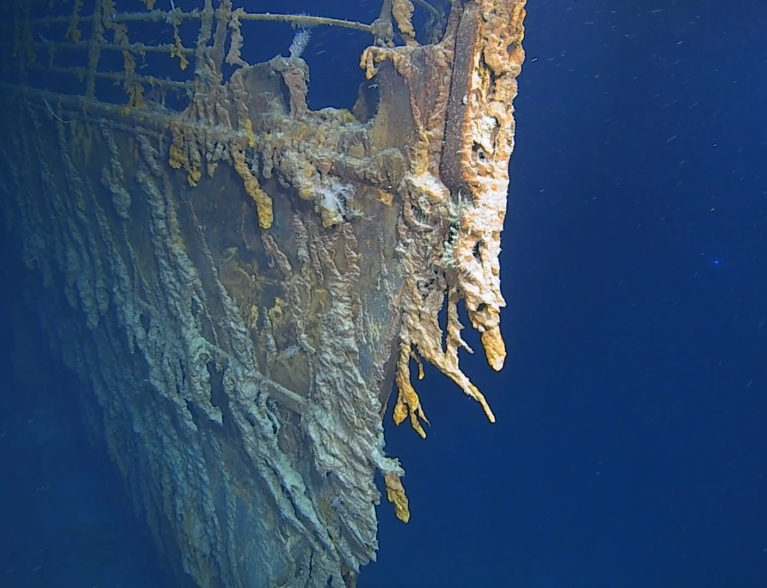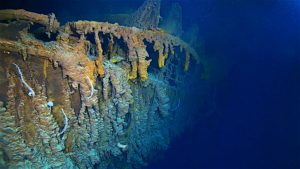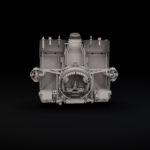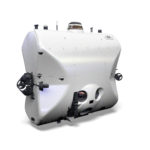
SEBASTIAN — The world now has a new glimpse of the wreckage of the deteriorating RMS Titanic in high resolution images, thanks to a local submarine manufacturing company.

PHOTO PROVIDED BY TRITON SUBMARINES
It has been 14 years since a human occupied submarine dive was made to the Titanic, which is sitting at the bottom of the North Atlantic Ocean. That changed this summer, when Triton Submarines used one of its vessels, the Limiting Factor, to send men 12,500 feet down into the watery depths with near-freezing temperatures to reach the ship, which sank in 1912.
“The most fascinating aspect was seeing how the Titanic is being consumed by the ocean and returning to its elemental form while providing refuge for a remarkably diverse number of animals,” Triton Submarines President and Co-Founder Patrick Lahey said in a statement.
Video provided by Triton Submarines
An exploration team, made up of scientists and and experts, used specially adapted cameras to capture 4K footage of the ship, authorities said. The submersible camera systems allow 3D models of the Titanic to be produced and make it possible to visualize the wreck in augmented reality and virtual reality technology, officials said.
The Triton Submarines team completed five dives to the wreckage from late July to early August, officials said. The rusting Titanic – 370 miles south of Newfoundland, Canada – continues to deteriorate from salt corrosion, metal-eating bacteria and changing sea currents.
Lahey, of Vero Beach, piloted three of the dives, officials said. The other men who participated in the dives were Tom Blades, Kelvin Magee, Frank Lombardo, Steve Chapelle, Tim McDonald, Shane Eigler and Colin Wollerman.
All of the divers work at the submarine facility in Sebastian, officials said. The team laid a wreath at the wreckage in memory of the more than 1,500 lives lost in the disaster.
“We are so pleased that we were able to repeatedly take the Limiting Factor down to the most historic ship lying on the ocean floor,” said Victor Vescovo, CEO of Caladan Oceanic. “Our success on Titanic clearly demonstrates we now have a proven system that can easily and repeatedly visit any ocean wreck, at any depth, anywhere in the world, and study it in detail. We’re seriously thinking about where to take her next.”
Video provided by Triton Submarines
The Limiting Factor, also called the Triton 36,000/2, was built and designed by Triton Submarines. The two-seater submarine, built in 2018, was the first manned submersible vessel made for repeatable exploration to the deepest points in the ocean, officials said.
Vescovo recently used the vessel to descend more than 35,000 feet in the Mariana Trench, located in the western Pacific Ocean. The plunge was part of his year-long Five Deeps campaign to pilot the submarine to the bottom of the five deepest spots in the world.
James Cameron, film director for the well-known 1997 Titanic movie, also used a vessel to venture down to the Mariana Trench in 2012, making it down to 35,787 feet.
The scientists who made the recent journey to reach the Titanic will publish the results alongside a documentary film being made by Atlantic Productions, a multi-award winning company based in London.
Photos of the Triton 36,000/2 provided by Triton Submarines








